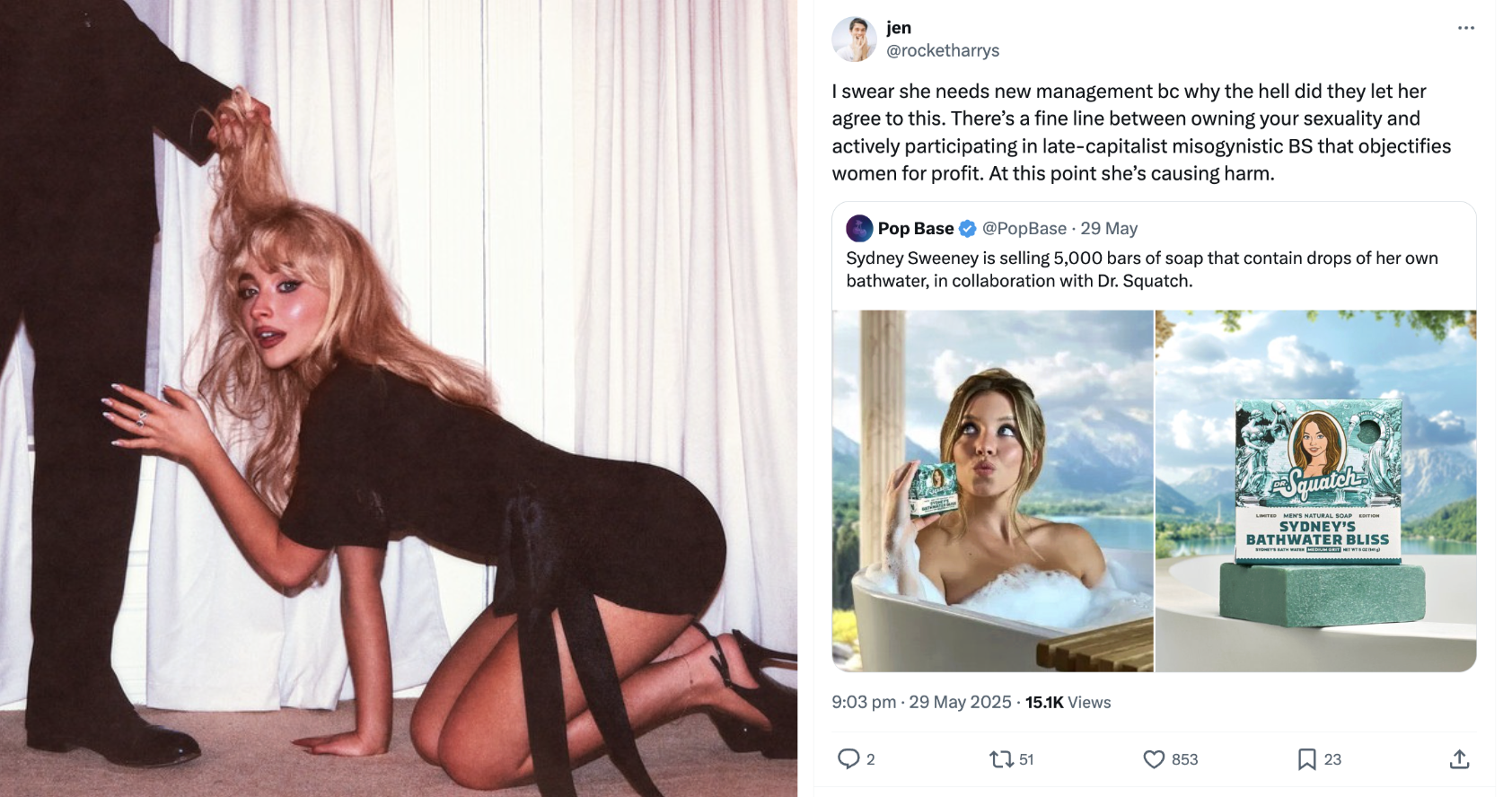Mystery Matters
In a hyper-transparent world, the art of intrigue is resurging – and brands can learn a lot from it.

2025 has felt like one long sigh over the deemed over-sexualisation of celebrity culture. This was the summer Sabrina Carpenter’s album artwork for Man’s Best Friend triggered furious debate (“not subtle or sex-positive – just soft porn pandering to the male gaze,” according to The Guardian). Sydney Sweeney’s Dr. Squatch campaign selling her bathwater also ignited widespread commotion (“capitalist misogynistic BS that objectifies women for profit,” as one X user posted).

For brands, this cultural fatigue with overexposure signals a turning point. The same appetite for transparency and provocation that once drove virality now risks oversaturation. Consumers are craving intrigue – and brands may need to rediscover the value of withholding, not oversharing.
It would be easy to chalk this backlash up to the global shift towards pearl-clutching tradwife conservatism. Or we could write it off as a sign of the collective backlash against Gen Z’s tendency for performative sexuality. As writer Layla Soboh argues in her takedown of modern eroticism, the deluge of sexual imagery among this younger generation renders “what used to be private performances of seduction utterly numb,” posing the question: is anything sacred anymore?
And while these reasons may be true, this longing to keep some things sacred also reflects a broader societal discontent. The question we’re asking ourselves deep down is: what happened to cultivating a sense of mystery?
The ideological goal of the noughties was to make everything available for everyone. Algorithms promised to rid us of elitist gatekeeping, removing the friction of discovering ideas and information. And of course, this cultural demystification isn’t without its virtues. The same forces that have stripped mystery away have also democratised knowledge for the better. When Kylie Jenner earlier this year revealed the exact specifications of her breast augmentation in response to a fan’s TikTok plea, her radically transparent approach to a usually intimate, gatekept topic was heralded as refreshingly honest.

Yet despite the benefits of celebrities blurring the line between public and private, we can’t help but reminisce about a time when prominent pop cultural figures maintained the allure of a secret inner life. There’s a common grievance among online commentators about the loss of the mysterious celebrity – a concept that increasingly seems like a relic of the past. As fashion and trend analyst Mandy Lee points out, Gen Z have no Alexa Chung, Olsen twins or Jane Birkin of their own – personalities shrouded in secrecy, yet globally famous – “because that combination of fame and mystery can not be achieved in this social media-obsessed space.”
The same could be said for brand storytelling. In a landscape optimised for oversharing and always-on content, many brands have flattened their mystique. Every behind-the-scenes, every “real talk” moment makes them more visible – but perhaps less compelling.
The truth is, a world dominated by social media, by design, is simply not optimised for mystery. It favours the kind of explicit sharebait where any ounce of ambiguity (poetic or otherwise) is deemed a flaw rather than a feature. Taylor Swift, perhaps the most famous artist in the world right now, understands this better than anyone else, fully embracing hyper-transparency and reverse voyeurism as tools for social virality. While the reviews of her latest album The Life of a Showgirl have so far been polarising, one common criticism has been its overuse of unsubtle, thinly veiled innuendos. Take the track Wood, for example, where she sings about her fiancé’s “magic wand” opening her thighs.

It’s not just about people. Places also have a hard time protecting their mystery in the age of digital ubiquity. Eight years ago, I moved to a version of Berlin shrouded in mystique. It felt like a city filled with temporary venues only discoverable by hushed hearsay, secret bars behind unmarked doors, and club spaces effectively sealed off from content capture – thriving beyond the panopticon of the social feed. But in the age of TikTok, where everyone is hyper-fixated on capturing every moment and constantly sharing intimate anecdotes from nights out, that enigmatic vibe has become a rarity.
The same longing for secrecy now fuels the resurgence of invite-only events, password-protected drops, and ephemeral brand activations. In an age of infinite access, scarcity itself has become a form of storytelling capital – an antidote to digital overexposure.
In this flattened culture, where everything becomes instantly knowable, we deprive ourselves of the anticipation that comes with guesswork. To reappropriate a term from the late military strategist Donald Rumsfeld, culture thrives on the “unknown unknowns”. Art, seduction, intrigue – these fundamental cornerstones of culture require blank spaces for our imaginations to fill in.
However, there are small signs of mystery re-emerging – a return to the rich emotional texture of subtlety, suggestion and restraint. Celebrities have begun gatekeeping their favourite haunts. Social media posting fatigue has set in; people are withdrawing from public feeds, moving their lives into smaller, private online spaces, cultivating their secretive personal lore in the shadows.
For brands, this re-emergence of mystery isn’t a retreat – it’s a creative reset. The next phase of cultural capital may belong to those who dare to leave gaps, build worlds that reward curiosity and let audiences do the decoding. In a post-overexposed era, mystery might just be the new authenticity.
Maybe we are finally weaning ourselves off the need to constantly perform our private lives so publicly and maybe a new generation will emerge: famous, but with mysterious public personas. Known to everyone but also, at the same time, completely unknown.
| SEED | #8355 |
|---|---|
| DATE | 07.10.25 |
| PLANTED BY | ALEXI GUNNER |


